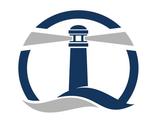There are investing and planning lessons to be found in the wake of a natural disaster of this type.
The first lesson is to protect those assets that you can’t live without. Health, life and loved ones are the first priority and everything else is secondary. The second lesson is that planning ahead can save a lifetime of savings and net worth. Part of your financial plan has to include protection from catastrophic loss.
While October was a mild month for equities and fixed income, the hurricane at October’s end and the November election are the first order of priorities. At this writing, we do not know the outcome of the elections and I won’t hazard a guess. When you read this, you’ll know the outcome. It will be nice to have the uncertainty of election behind us. The uncertainty of the fiscal cliff remains, however, regardless of the election outcome, and until we know more, we will stay put in our portfolios.
In October, the US equity market, as measured by the Russell 1000, was down 1.7% and is up 14.3% this year. International Developed Markets, as measured by MSCI EAFE, grew 0.8% in October and are up 11.0% for 2012. US Bonds, as measured by the BarCap Aggregate Bond Index, were up 0.20% for October and 4.2% for 2012.
Click through to see recent performance of our three Covestor models:
- Growth Portfolio
- Income Portfolio
- Balanced Portfolio
At this writing, we do not plan any particular trade in the investment portfolios. We are still in hurricane and uncertainty season. Until we know more, our investment positions will stay the same.
Any index comparisons provided in the blogs are for informational purposes only and should not be used as the basis for making an investment decision. There are significant differences between client accounts and the indices referenced including, but not limited to, risk profile, liquidity, volatility and asset composition. The Russell 1000 Index is a stock market index that represents the highest-ranking 1,000 stocks in the Russell 3000 Index, which represents about 90% of the total market capitalization of that index. The MSCI EAFE Index is recognized as the pre-eminent benchmark in the United States to measure international equity performance. The Barclays Capital Aggregate Bond Index is a broad base index, and is often used to represent investment grade bonds being traded in United States.




